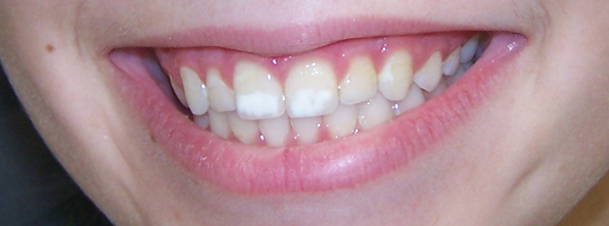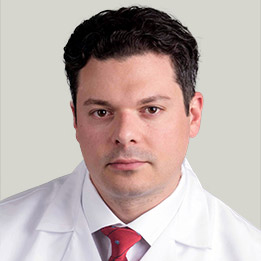How To Avoid White Spots During Orthodontic Treatment

Have you had friends get braces, only to have white spots on their teeth once the braces were removed? No matter what you may have heard, these spots are completely preventable and it’s up to you to prevent them.
“The main cause of white spots on the teeth during orthodontic treatment is poor oral hygiene,” says Kenilworth orthodontist Dr. Michael Stosich. “Failing to brush properly leads to de-mineralized areas of your teeth. And no matter what anyone may tell you, they are caused by poor brushing and are 100% preventable.”
In order to ensure your mouth stays healthy, it is important to properly brush and floss your teeth. This can be a bit trickier while you’re in braces because the brackets and wires create nooks and crannies where food particles can get trapped. But, it is more important than ever to pay close attention to your oral hygiene while you are in braces.
Brushing and flossing removes plaque. This is important because plaque produces the acid that attacks our teeth, and this is what can lead to the white spots that may occur. If you didn’t have the best oral hygiene routine before you had your braces put on, it will be especially important for you that you step up your hygiene game while in treatment.

So, how can you prevent these white spots from forming in the first place?
-
- Brush, brush, brush! It may take you extra time to brush once your braces are placed, but these extra seconds will be important to ensure you have a gorgeous smile when your braces come off. You may want to look into an electric toothbrush that has special orthodontic attachments to ensure you clean thoroughly around the brackets and wires. Pack a travel toothbrush with you so you can clean after lunch and snacks, too. And be sure you are using a fluoride toothpaste as fluoride can ensure your enamel stays strong enough to fend off acid attacks.
-
- Floss! Even if you weren’t a big flosser before, it’s incredibly important to floss regularly while in braces. Because it can be hard to floss around the wires of your braces, invest in a floss threader to allow you to more easily thread the floss through the wires. A water flosser, such as a WaterPik, can be a great addition to your oral hygiene routine, as well.
-
- Pay attention to what you eat. Choose tooth friendly foods and beverages that are low in sugar and acid to prevent extra damage to your teeth while in treatment. Skip over the soda and sugary drinks, and don’t snack as frequently.
-
- Drink plenty of water. Water can help to wash away food particles that remain after we eat, ensuring they can’t stay to mingle with the acids that already live in our mouths.
-
- Visit the dentist regularly. Being in braces is no reason to skip your regular dental appointments. Your orthodontist wants you to have a beautiful smile at the end of treatment, and seeing your dentist every six months can help ensure that happens.
“It is estimated that about 10-20% of adolescents in orthodontic treatment will get white spots,” says Dr. Stosich. “At your first braces appointment, your orthodontist and his or her staff will discuss proper oral care. Learning the right techniques for brushing and flossing can help prevent these spots, and ensure your mouth stays healthy throughout treatment. A healthy mouth will also ensure your retainer fits properly, and ensure your new bite remains effective. If we notice during treatment that you may be at risk for white spots, we will again go over proper oral hygiene, as well as recommend additional.


